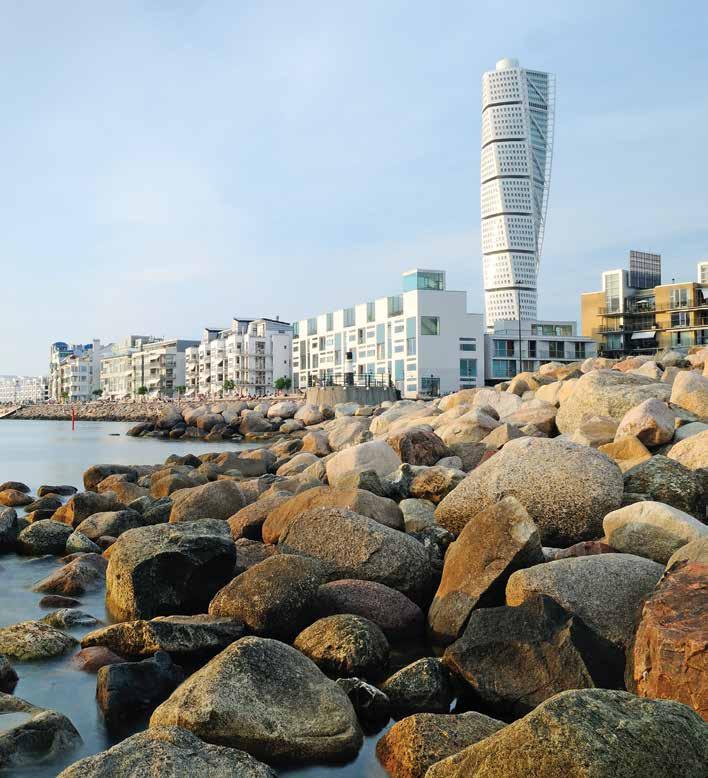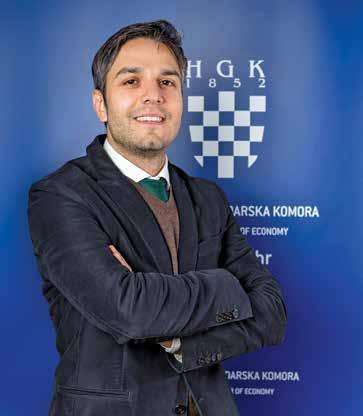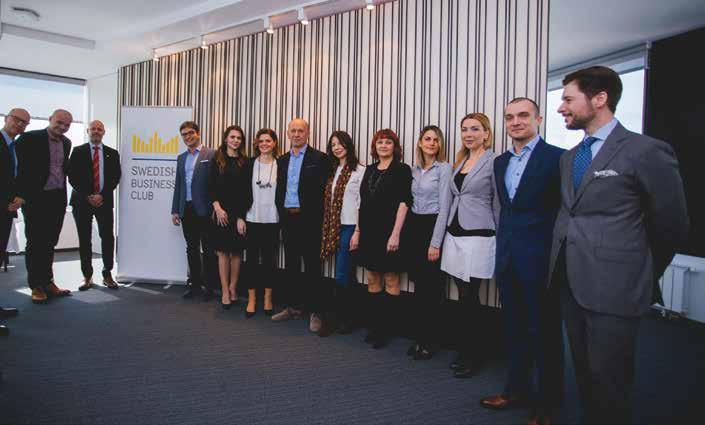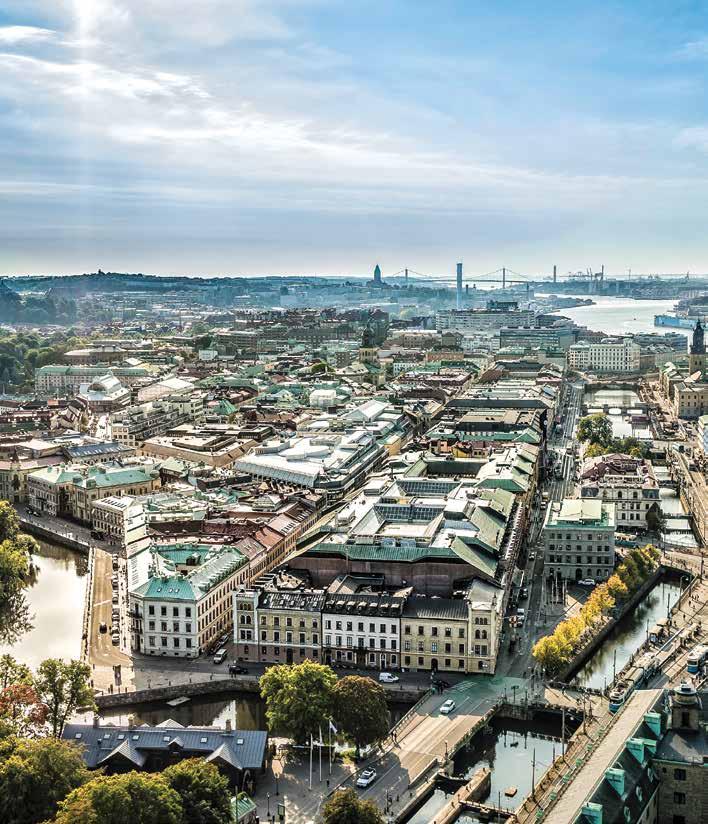
7 minute read
COUNTRY WITH CLOSE TO 28 MILLION
TOURISM
COUNTRY WITH CLOSE TO 28 MILLION VISITORS PER YEAR
Advertisement
Most people view Sweden as “a country somewhere up there in the North”
As in most parts of Europe, tourism in Sweden began sometimes during the 19th century. In fact, the first Swedish tourist association was founded in the town of Uppsala in 1885, with the aim of promoting tourism in Sweden and helping people discover their own country. At the turn of the century, in 1900, first swimmers started to swim in the sea in Skåne and on the island of Gotland. Many came to watch this unheard-of event – men and women swimming together! During the second half of the 20th century, tourism in Sweden started to happen “en masse”, fo cusing on diverse nature sights, snow and even sun. Charter flights began in 1953 and until 1996, the number of travelers had grown to around 1.6 million.
What can Sweden, considered by many as “a cold and dark country”, offer to tourists? The number of visiting tourists in Sweden has been steadily growing over the last few years. But what is there to see? To do? To buy? To eat? Why should you go to Sweden?
Sweden is a land of varieties. It has a wealth of opportunities for everyone; what ever the person might be interesting in. From the green and warmer South to the snow covered North, from the beautiful coast of the West to the archipelagos in the East.
Are you interested in culture, heritage and arts? Sweden has a rich and interesting history. This is a country that has not been in war for centuries. Thus, the cultural heritage has been preserved. The obvious places to visit are the towns - from the capital Stock holm, to Gothenburg (Göteborg), Malmö, and Umeå. But the countryside is also full of surprises! Just visit “The Kingdom of Crystal” (the county of Småland where glass has been hand-blown since 1742), and Stock holm, the town that rests on many small islands, and Sweden’s most visited town. The “must-do’s” in Stockholm are: • Vasa Museum: The 69-metre-long warship
Vasa sank on its maiden voyage in the middle of Stockholm in 1628 and was sal vaged 333 years later, in 1961. For nearly a half of century the ship has been slowly, deliberately and painstakingly restored to almost its original glorious state. The three masts on the roof outside the specially built museum show the height of the ship's orig inal masts. Today, the Vasa Museum is the most visited museum in Scandinavia, with over one million visitors a year.
ARE THERE BEARS IN THE STREETS IN SWEDEN?FUSNOTA 2: SWEDEN HAS A VERY DIVERSE HISTORY, CULTURE, NATURE, FOOD, ADVENTURE, SPORTS…
• ABBA Museum: The Museum is more than just that. The permanent exhibition is chock full of ABBA memorabilia like stage outfits, instruments, gold records, awards and much more. But it’s also an interactive experience that invites you to sing, dance, mix music and try out virtual stage outfits. • Skansen, the outdoor park: Skansen is a favorite both with Stockholmers and vis itors passing through. This is the oldest outdoor museum in the world and also the Stockholm Zoo which houses animals native to Scandinavia. This is also a Sweden in miniature with 150 farms and dwellings from different parts of the country disas
MOST INOVATIVE
SWEDEN IS KNOWN AS ONE
OF THE MOST INNOVATIVE
COUNTRIES IN THE WORLD
AND DURING YOUR STAY AS
sembled and transported here. • The Royal Palace: One of the largest palaces in Europe, the Royal Palace is the official residence of His Majesty the
King of Sweden. It has over 600 rooms.
The Palace is open to the public and has no less than five museums. It was largely built during the 18th century in the Italian
Baroque style, in the location where the
Tre Kronor Castle burned down in 1697. • Gröna Lund: Experience the joyful and magical world of Gröna Lund, Stockholm´s amusement park. • Drottningholm: Take a day trip to Drot tningholm and experience a historic milieu of the highest standard. The Drottning holm Palace is Sweden's best-preserved royal palace built in the 17th century, the permanent residence of the royal family and one of Stockholm's three World Herit age Sites. The palace features the magnificent salons from the 17th, 18th and 19th century, a beautiful park, a unique palace theatre and the Chinese Pavilion. The im pressive Baroque garden was created in early 1681. • Gamla Stan: Gamla Stan, the Old Town, is one of the largest and best preserved medieval city centers in Europe, and one of the foremost attractions in Stockholm.
This is where Stockholm was founded in 1252. All of Gamla Stan and the adjacent island of Riddarholmen are like a living, pedestrian-friendly museums, full of sights, attractions, restaurants, cafés, bars, and places to shop. Gamla Stan is also popular with handicrafts and souve nir aficionados.
Another important aspect of the modern culture is the Swedish literature, primarily the crime novels which have gained large readership worldwide. Have a peek into the Swedish society, understand the col
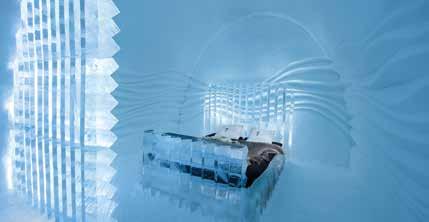
lective Swedish psyche, and see wonderful natural settings! And you can do all of that through the novels by Stieg Larsson (Mil lennium Trilogy), Henning Mankell (Detective Wallander books and TV series), Camilla Läckberg, Lars Kepler, Liza Marklund, Jens Lapidus and others.
Would you consider Sweden as a design travel destination? The country has gained that status as a result of having a tolerant culture which created opportunities and is a breeding ground for innovative solutions and ideas. Swedish design doesn’t only cover traditional things like cloth, furniture, jewelry, etc. but also innovations, new ideas in architecture, and new restaurant food. Swedes are encouraged from a young age to defy norms, experiment and dare trying. Hence, Sweden is known as one of the most innovative countries in the world and during your stay as a tourist, you have the oppor tunity to embrace all the different aspects of modern design at every step.
As it stretches from the South, leaning onto Europe by the Öresundsbron from Sweden to Denmark, to the cold and dark North, Sweden has a very diverse history, culture, nature, food, adventure, sports, etc. So here are a few teasers, just to help you decide to visit Sweden! • Ice hotel: The world’s first hotel made of ice and snow. Founded in 1989, it is re-made in a new guise every winter. The hotel is located in the Swedish village of Jukkas järvi – 200km north of the Arctic Circle. • Midsummer: This large gathering is one of
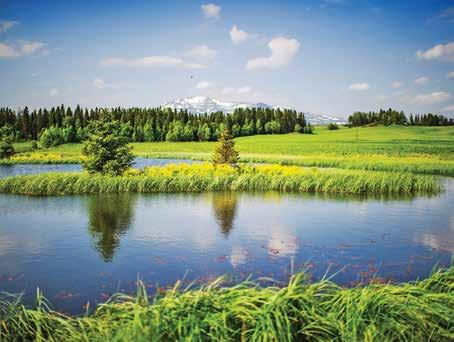
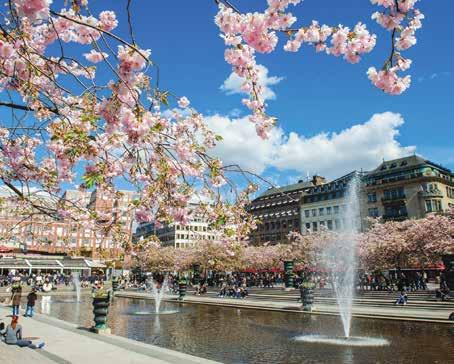
the most loved Swedish traditions. People often begin the day by picking flowers and making wreaths that they place on the maypole, which is a key part in the celebrations. The maypole is raised in an outdoor spot and traditional ring-dances ensue, to the delight of the children and some of the adults. • Lucia: The annual candlelit Lucia proces sion, which takes place on 13th December, is perhaps one of the more exotic-look ing Swedish customs, with girls and boys clad in white full-length gowns, singing songs together. It is celebrated every where: in homes, schools, hotels, companies, outdoors. • Semla: a cream-filled bun traditional ly eaten in January-February. Around 20,000,000 semlas are consumed every year. • Dalahäst: The Dala Horse is the most popular Swedish souvenir. This is a wooden horse, hand-painted by Swedish woodcut ters in the province of Dalarna, which originates from the 1700s. It is usually painted in red, but comes in other colors too. • Snowmobiling: Snowmobile safaris can include having lunch in wilderness and dinner in Sami teepees, saunas, hot tubs, mountain lodges, campfires, ice fishing. • Northern lights: The Northern Lights, or
Aurora Borealis, appear around the begin ning of September (Kiruna) to around the end of March all over Swedish Lapland. Welcome to Sweden! Enjoy the sustainabil ity and diversity of Sweden as a tourist!



